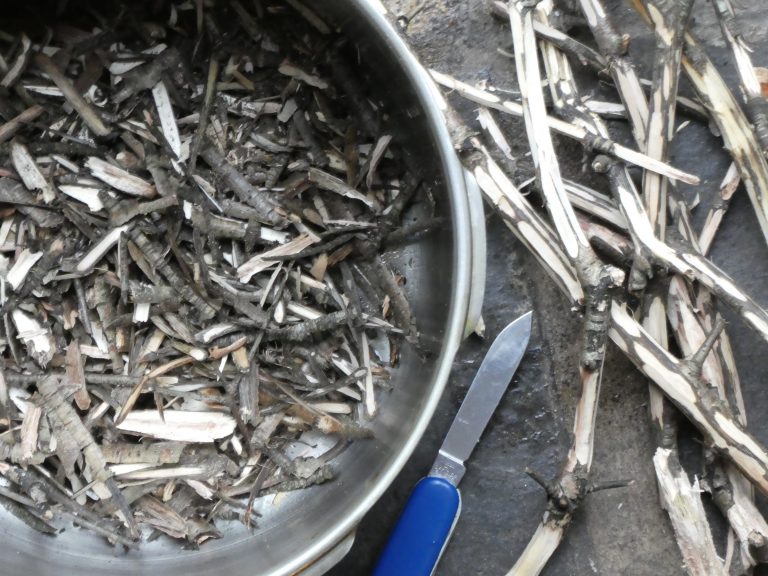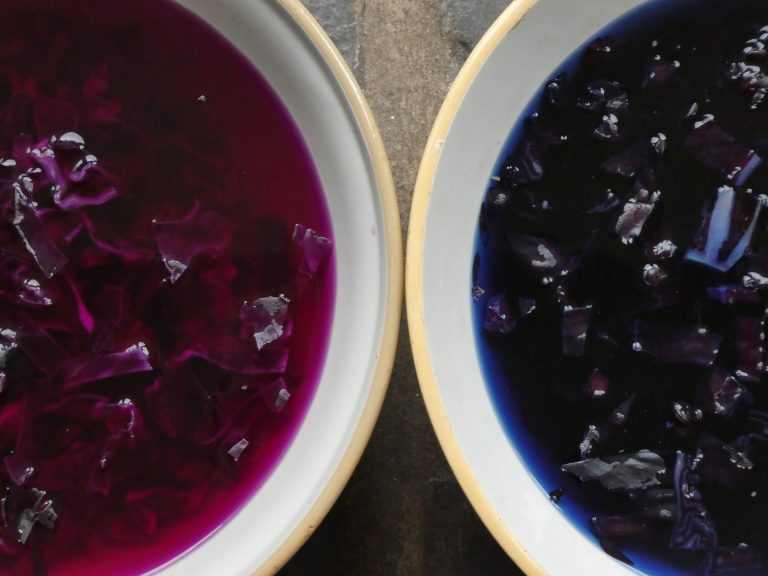There are many different ways to make a dye from plant material. The most common way is the hot dye technique Some plant material will release colour just by soaking in water or through plunging frozen plant material in warm water.
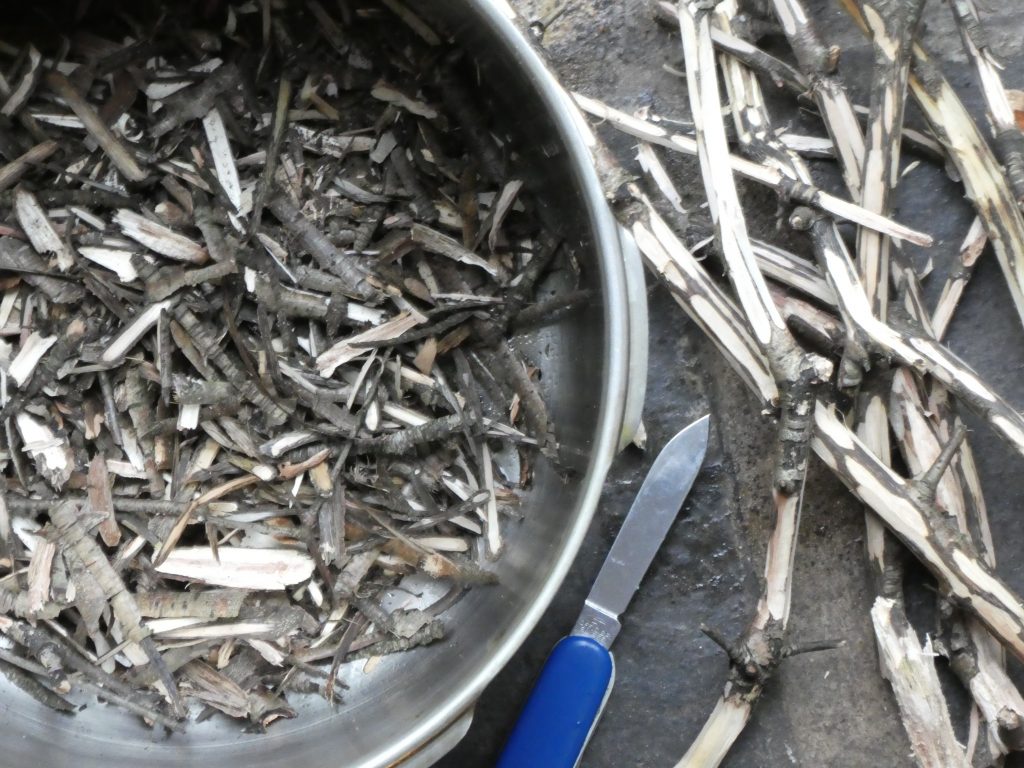
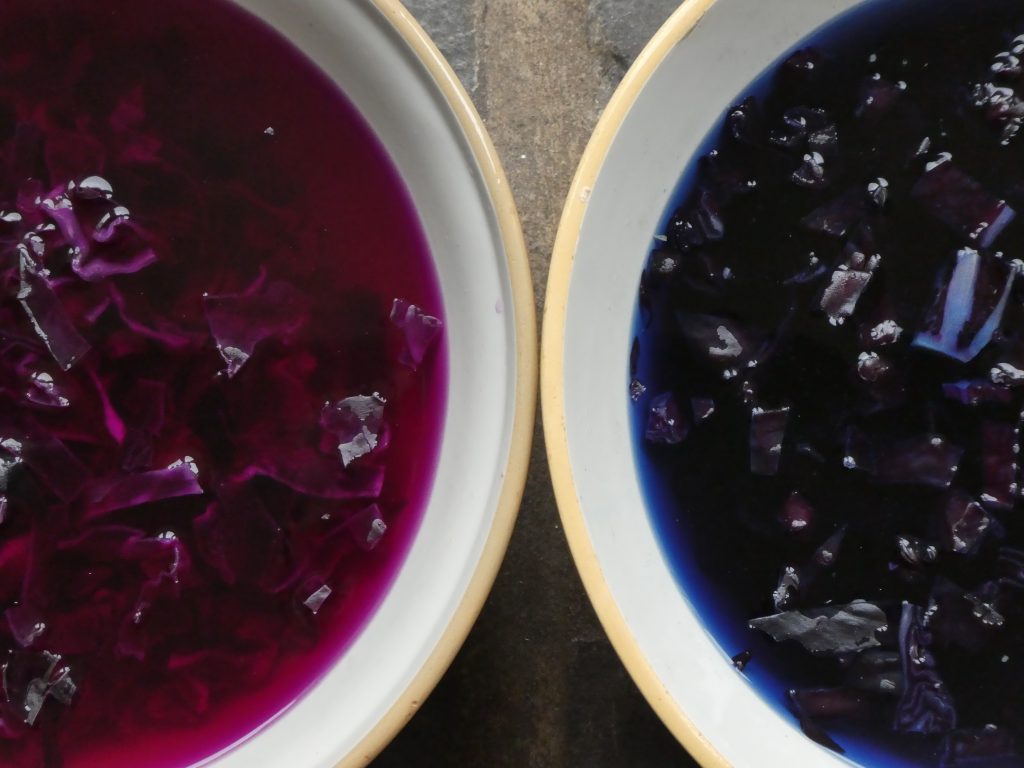
General Rules that Apply to Most Dyeing Situations
- Always weigh the fabric/item of clothing you wish to dye. This enables you to estimate the amount of plant material to use and liquid required.
- The weight of fresh plant material should at least match the weight of fibre. Better results will be achieved by using a higher ratio of plant material to fibre. However, the amount of required plant material varies greatly depending on the strength of the pigment and shade required.
- You will require less dried plant materials e.g. onion skins or alder cones. Approximately 1/2 of the weight of an item to be dyed should yield a good colour
- If using a powdered substance like turmeric or paprika – use 50 grams of spice for 100grams of fibre. Mix to smooth runny paste before adding to a dye pan filled with 8 – 10 litres of water.
- Most fibres and yarn will need to remain in the dye bath for at least 1 hour, stirring occasionally. Turn off heat and allow to cool slowly, leaving to soak overnight. Remove fabric from dye bath and wring out and leave to dry, away from direct sunlight.
- The volume of liquid required in the dye bath is 20 – 1. This means if you want to dye a T shirt that weighs 200grams you will need 4 litres of liquid.
- 20 x 200g of material = 4000ml or 4L
- Always soak items in cold water before adding to a dye bath. Carefully add item/cloth to the dye bath and stir.
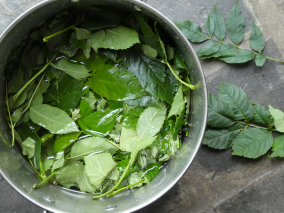
Method
- Chop up or tear your chosen materials. In the dye pan, add water to fully cover dye materials plus 2-3 cm extra and leave to soak overnight – if possible. If using berries just put them in the pot, with appropriate water – no need to chop or soak overnight.
- Slowly heat the pan until nearly boiling then adjust temperature to a very gentle simmer (you should just see a few bubbles coming to the surface).
- Continue to gently simmer for about 1 hour and observe how the colour deepens. Then remove from heat and pulverise with a potato masher and leave to soak overnight.
- The next day use your sieve, lined with the muslin or gauze, to strain the dye into a clean bucket. Clean out your dye pan and again strain the liquid for a second time, into the pan.
- When you are ready to dye you will need to add more water to your pan – working out the approximate amount of liquid needed for the weight of fabric to be dyed e.g., 20:1 or 20ml liquid: 1g weight of fibre.
For example – I have 600ml of extracted dye and I want to dye a T-shirt that weighs 150 g
150 x 20 = 3000ml (3L) total liquid required
3000ml – 600ml (dye) = 2400ml.
Therefore I need to add 2.4L of water to the extracted dye.
- Once you have the dye in the pan and have topped up with an appropriate amount of water, you are ready to add the fibre.
- Thoroughly wet the fibre and add to the dye bath
- If using wool it is important the fibre is added to cold dye and then gradually heated. Plant based fibre can be added straight into warm or hot dye.
- Heat the dye very slowly, stirring regularly until a gentle simmer is reached. Maintain a gentle simmer for 30 mins – 1 hour.
- When you are happy with the colour – turn off heat and leave the item in dye to soak overnight. Remove from the dye bath and gently wring and leave to dry, out of direct sunlight.
- When dry, leave as long as possible and at least a week before rinsing in lukewarm water.
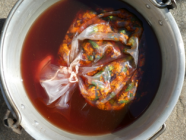
Ice Dye
- Freeze flower heads like French Marigolds, Dahlias, Chamomile tinctoria etc. or finely chopped head of red cabbage for at least 24 hours.
- Fill a bucket with some warm water and add the frozen flower heads or frozen chopped red cabbage. Wear rubber gloves and gently squeeze the plant material for a few minutes.
- Leave to soak overnight.
- Strain the dye and add soaked fibre or fabric.
- The dye can then be used hot or cold.
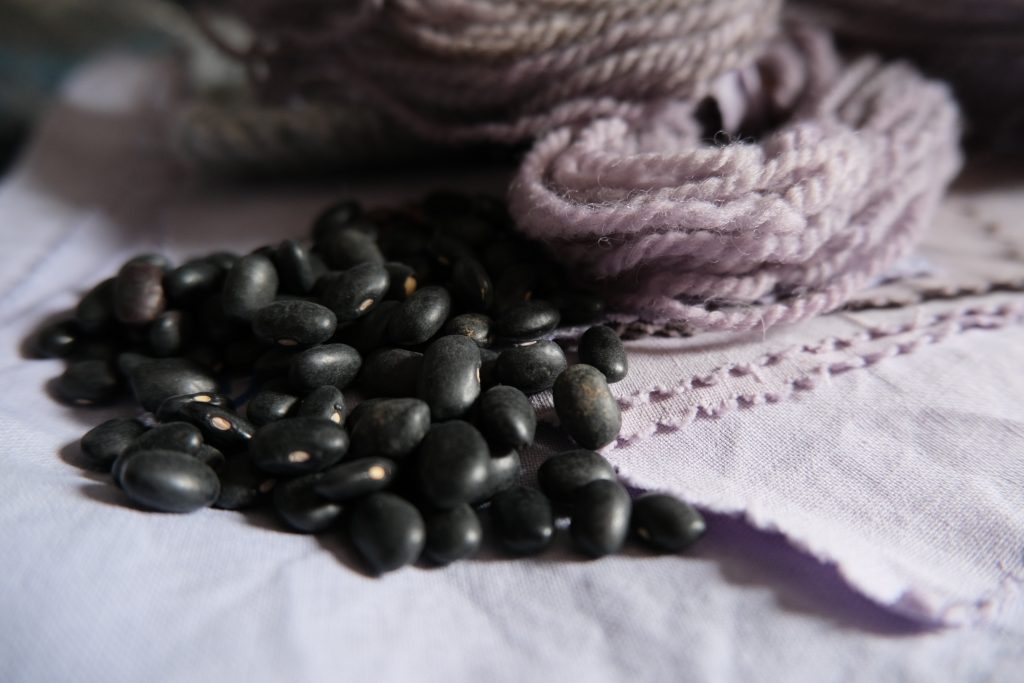
cold extraction
- For black beans
- Soak a pack of dried black beans in 3 litres of water for 16 hours.
- Check at times and add a little more water if the beans start poking through the surface of the liquid.
- At the end of the soaking time, carefully pour off the liquid, trying to avoid the sediment. I usually find it necessary to leave the liquid to settle in a jug, allowing the sediment to settle again before pouring off.
- The dye can then be used hot or cold.
